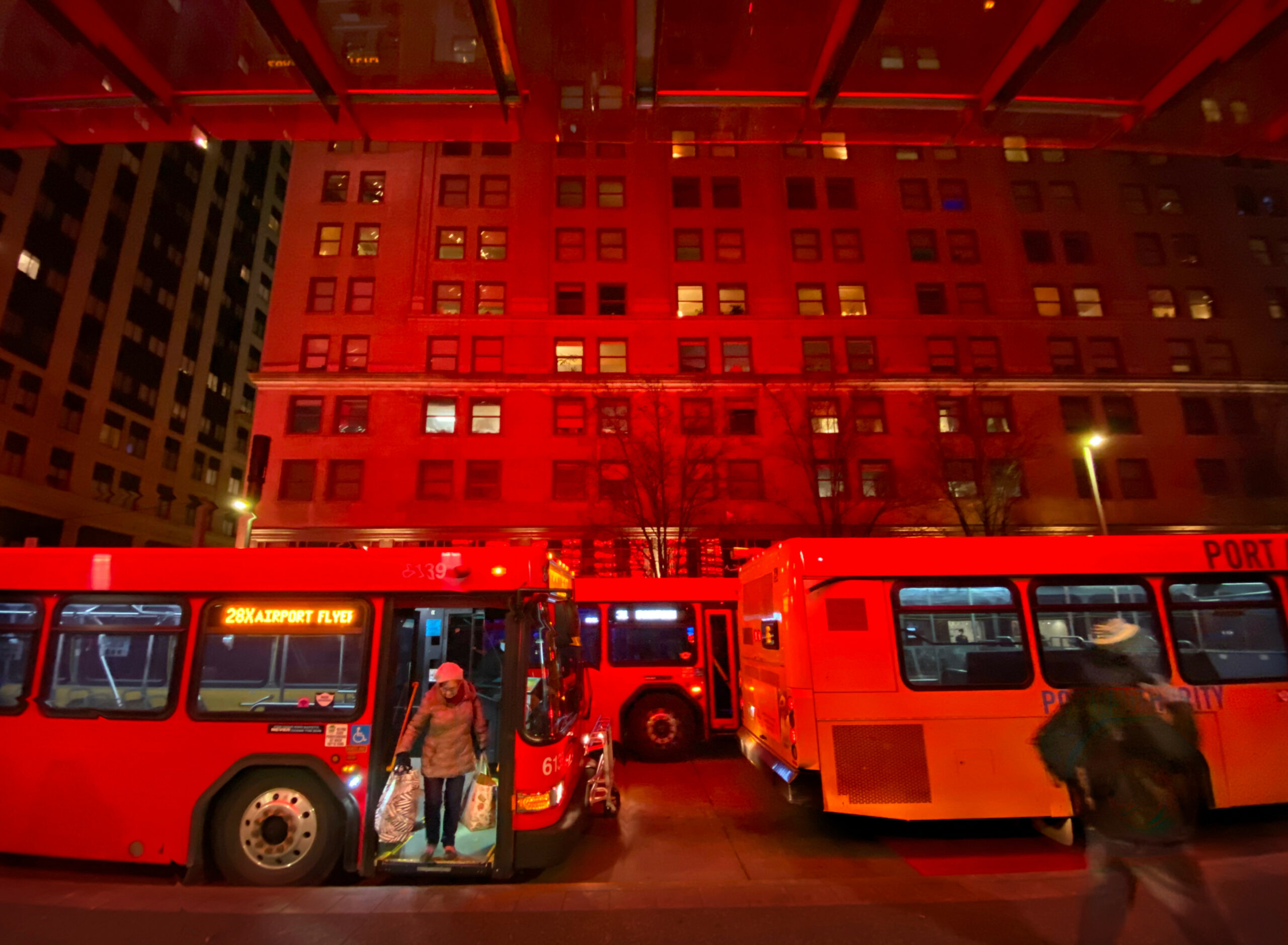Pittsburgh Regional Transit is done waiting for pre-pandemic ridership to return, and will plan for future service based on a “new normal” that shows strong neighborhood ridership for personal needs and a reduction in rush-hour transit into Downtown Pittsburgh for office work.
The agency’s annual service study, discussed at a committee meeting last week, shows ridership increased by about 42% for the fiscal year that ended July 2022 to 32,328,532. That’s about 30 million fewer riders than 2019, the last full year before the pandemic — and an indication the agency shouldn’t count on returning to that level, CEO Katharine Eagan Kelleman said in an interview after the meeting.
“We have come to see post-pandemic where our ridership is now and what people need, and we have to be very fair and cautious charting this new course,” she told the Union Progress. “It is time.”
The decision to plan for reduced ridership coincides with the agency’s plan to begin a full evaluation next summer of its 91 bus routes that travel outside Downtown Pittsburgh.
The $7.5 million study, funded through a federal grant, will determine whether routes from as far back as the 1960s should be changed to deal with population shifts and reach new areas.
Only about 48% of Allegheny County has easy access to public transit, something the agency wants to substantially improve. It developed its 25-year plan, NEXTransit, during the pandemic, but Kelleman said those ideas and recommendations are still valid despite reduced ridership.
The agency is finalizing a similar study of how bus routes pass through Downtown Pittsburgh as part of plans for the Bus Rapid Transit system, which will create dedicated lanes for buses between the Golden Triangle and Oakland. Many non-BRT routes will be adjusted to create exclusive lanes for the system.
Staff will also adjust schedules in the coming months — often increasing the time a bus has to complete its route — so that buses arrive within five minutes of their scheduled time. Although that may mean slightly slower service, Kelleman maintained that among the most important things the agency can do is provide service “that our staff can meet and our passengers can rely on.”
Jennifer Liptak, who sits on the PRT board and is chief of staff to County Executive Rich Fitzgerald, said she agreed with the plan to “get back to basics” until ridership returns.
“Until that time, it’s good that we concentrate on those basics of being clean and on time,” she said.
Jim Ritchie, the agency’s chief communications officer, said the system will closely monitor the use of Downtown office space to see if more employees return to work or buildings are converted to residential space, which would have an effect on transit usage.
Ellie Newman, PRT’s section manager for service development, who presented the annual report, said the network study next summer will be an opportunity to “adjust to the new reality.”
Kelleman and Newman acknowledged that the annual report showed the agency didn’t compare well with peers in categories such as cost per passenger or time in revenue service. But they added that other agencies had made more substantial service cuts while local officials have tried to tweak the system and maintain as much service as possible, leading to higher costs.
Using 2021 numbers, the most recent year available, PRT finished in the middle of 10 comparable agencies in passengers per service hour at 12.9. Baltimore was highest at 22.6 and Cleveland lowest at 10.8, but numbers at most agencies were down due to the pandemic.
The cost per passenger at PRT was the highest at $18.98, about $2 more than Baltimore. Milwaukee was the lowest at $8.21. The local agency’s costs regularly have been among the highest in the country due to the region’s topography, traffic congestion, the age of the system and legacy costs for employees.
PRT also was last in the amount of time that vehicles are actually in service picking up passengers and collecting fares. Local buses are going to and from service areas about 13.4% of their time on the road, immediately behind Seattle at 11.5%, while the best was Milwaukee at 3.6%.
The agency attributed that number to the location of its four maintenance garages, which are far from where passenger service begins for some routes.
Kelleman stressed that increasing costs per passenger highlights the need for more transit funding, rather than presenting a reason for cutting service. She said transit benefits everyone, whether they use it or not, by reducing other vehicles on the road and cutting pollution.
The agency gets about 20% of its revenue from the fare box and used $58.6 million in federal stimulus funds to cover costs last year. It has about $310 million remaining in stimulus money that must be used by 2026.
“What’s going on at the fare box is lower,” Kelleman said. “We still have a huge amount of financial need. I would argue we are underfunded. The question right now is, ‘How do we stabilize what we have so we can make the changes we need to better serve our passengers?’”
Ed covers transportation at the Pittsburgh Post-Gazette, but he's currently on strike. Email him at eblazina@unionprogress.com.



